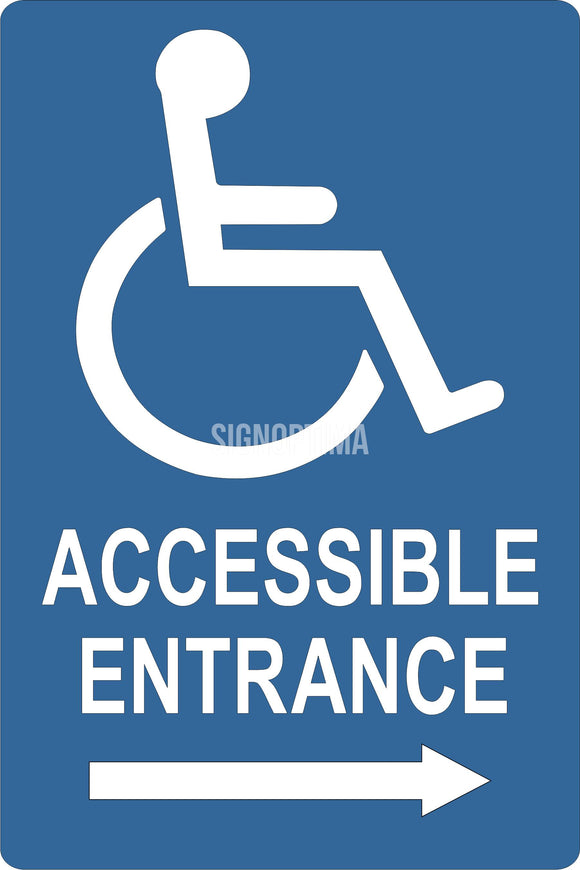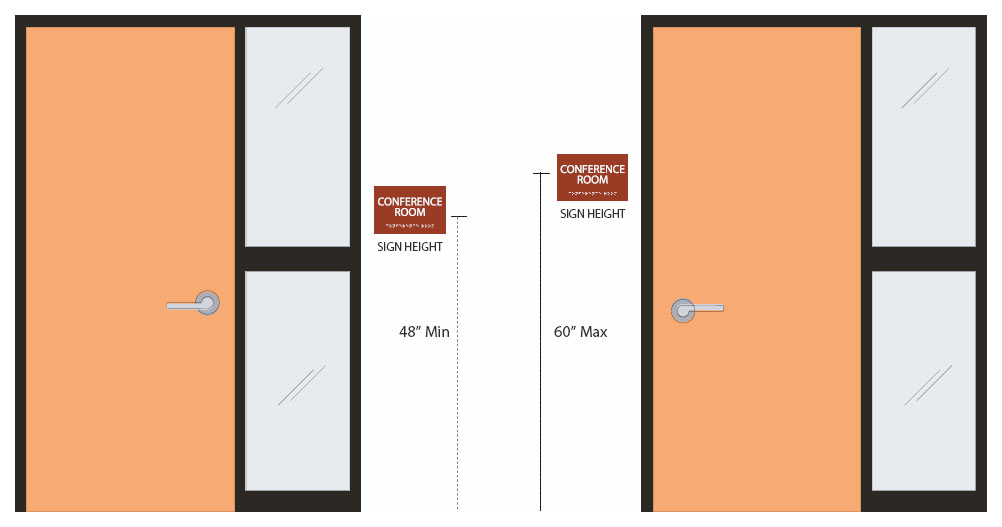The Impact of ADA Signs on Neighborhood Access
The Impact of ADA Signs on Neighborhood Access
Blog Article
Checking Out the Trick Functions of ADA Indications for Enhanced Ease Of Access
In the world of availability, ADA signs offer as quiet yet powerful allies, making certain that rooms are navigable and comprehensive for people with specials needs. By incorporating Braille and tactile aspects, these indicators break obstacles for the visually impaired, while high-contrast shade systems and understandable typefaces provide to varied visual requirements.
Importance of ADA Compliance
Making certain compliance with the Americans with Disabilities Act (ADA) is critical for cultivating inclusivity and equivalent access in public areas and offices. The ADA, enacted in 1990, mandates that all public facilities, companies, and transport services accommodate individuals with disabilities, guaranteeing they appreciate the same rights and chances as others. Conformity with ADA standards not just fulfills legal obligations but likewise boosts a company's online reputation by showing its commitment to diversity and inclusivity.
One of the vital aspects of ADA compliance is the implementation of easily accessible signs. ADA indications are developed to make sure that individuals with handicaps can easily browse with structures and areas.
Additionally, adhering to ADA guidelines can minimize the threat of potential fines and legal effects. Organizations that fall short to abide by ADA standards might encounter claims or fines, which can be both financially troublesome and damaging to their public photo. Thus, ADA compliance is indispensable to fostering an equitable environment for every person.
Braille and Tactile Aspects
The unification of Braille and tactile elements into ADA signs personifies the principles of availability and inclusivity. It is usually positioned beneath the corresponding text on signage to make sure that individuals can access the information without visual assistance.
Tactile elements extend past Braille and include raised signs and personalities. These components are developed to be discernible by touch, allowing individuals to identify area numbers, toilets, leaves, and various other vital locations. The ADA sets details standards relating to the size, spacing, and placement of these tactile aspects to maximize readability and make sure uniformity throughout various environments.

High-Contrast Color Pattern
High-contrast shade plans play an essential function in enhancing the presence and readability of ADA signs for individuals with aesthetic problems. These plans are vital as they make the most of the distinction in light reflectance between message and history, guaranteeing that indicators are quickly discernible, also from a distance. The Americans with Disabilities Act (ADA) mandates making use of certain shade contrasts to fit those with minimal vision, making it a critical facet of compliance.
The effectiveness of high-contrast colors exists in their capability to stick out in different lights problems, including poorly lit environments and locations with glow. Generally, dark text on a light history or light message on a dark history is employed to accomplish optimum comparison. For example, black message on a white or yellow background supplies a raw visual distinction that helps in fast acknowledgment and understanding.

Legible Fonts and Text Dimension
When considering the style of ADA signs, the selection of legible fonts and suitable message size can not be overemphasized. These components are published here essential for making sure that indications are available to individuals with visual disabilities. The Americans with Disabilities Act (ADA) mandates that font styles need to be not italic and sans-serif, oblique, script, highly decorative, or of unusual form. These needs aid guarantee that the message is quickly readable from a distance and that the personalities are distinct to varied target markets.
The dimension of the message additionally plays a crucial duty in access. According to ADA guidelines, the minimum text elevation must be 5/8 inch, and it must enhance proportionally with viewing range. This is specifically crucial in public areas where signage needs to be reviewed rapidly and accurately. Uniformity in message size adds to a natural visual experience, assisting individuals in navigating settings effectively.
Additionally, spacing in between letters and lines is integral to clarity. Sufficient spacing prevents personalities from showing up crowded, improving readability. By sticking to these criteria, designers can significantly enhance accessibility, making sure that signs serves its desired function for all people, no matter their visual capacities.
Effective Placement Strategies
Strategic placement of ADA signs is essential for making the most of access and making certain compliance with legal criteria. Properly located signs guide individuals with specials needs properly, facilitating navigation in public spaces. Secret considerations include height, distance, and visibility. ADA standards stipulate that signs should be mounted at a height between 48 to 60 inches from the ground to ensure they are within the line of view for both standing and seated people. This conventional elevation variety is essential for inclusivity, enabling wheelchair users and people of varying heights to accessibility information easily.
Furthermore, indications must be placed beside the lock side of doors to enable simple identification prior to entrance. This placement helps people find rooms and rooms without blockage. In cases where there is no door, signs need to be located on the closest adjacent wall surface. Consistency in sign positioning throughout a center enhances predictability, minimizing confusion and boosting overall individual experience.

Conclusion
ADA indicators play a vital function in advertising ease of access by incorporating attributes that attend to the demands of individuals with specials needs. Including Braille and tactile elements guarantees important info is available to the visually find this impaired, while high-contrast color design and clear sans-serif font styles boost presence throughout various lighting conditions. Efficient positioning methods, such as suitable placing elevations and calculated areas, better facilitate navigation. These elements jointly foster an inclusive environment, underscoring the importance of webpage ADA compliance in guaranteeing equivalent accessibility for all.
In the world of access, ADA indicators serve as silent yet effective allies, making certain that spaces are navigable and inclusive for individuals with disabilities. The ADA, established in 1990, mandates that all public centers, companies, and transportation solutions accommodate people with handicaps, ensuring they delight in the exact same civil liberties and chances as others. ADA Signs. ADA signs are created to make sure that people with specials needs can quickly navigate via buildings and rooms. ADA guidelines state that indications must be mounted at a height between 48 to 60 inches from the ground to guarantee they are within the line of view for both standing and seated individuals.ADA indicators play a crucial role in promoting accessibility by integrating attributes that address the needs of people with handicaps
Report this page